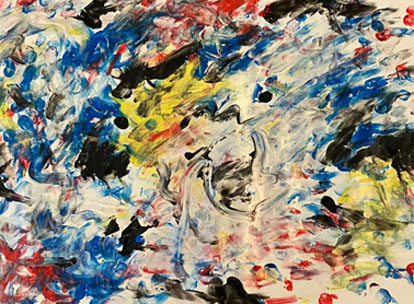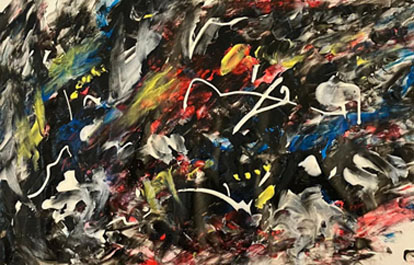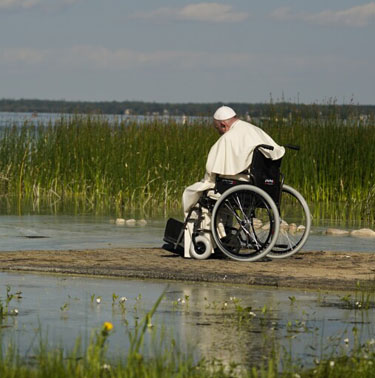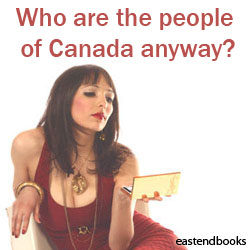Pope’s visit should also remind us that Indigenous peoples “were fundamental to the growth of Canadian institutions”
Jul 28th, 2022 | By Counterweights Editors | Category: In BriefCOUNTERWEIGHTS EDITORS, GANATSEKWYAGON, ON. JULY 28, 2022. Paul Elie, a senior fellow at Georgetown University with a special interest in religion, has written in The New Yorker about Pope Francis’s current Canadian visit, to confront the role of the Catholic Church in the historic appalling and now quite discredited Indian Residential Schools in Canada :
“On Sunday [24 July 2022], he met with Indigenous representatives at the airport in Edmonton; then, on Monday, he travelled fifty miles south to the hamlet of Maskwacis. There, seated in a wheelchair, he addressed other representatives, saying, ‘I have come to your native lands to tell you in person of my sorrow.’”
Mr. Elie carried on : “The apology that followed was striking in its openheartedness. “I humbly beg forgiveness for the evil committed by so many Christians against the Indigenous peoples,” the Pope said … The apology suggested that regardless of how long Francis remains Pope, the trip will serve as a capstone to his tenure. Much of his papacy has involved redressing wrongs committed by the Church, and he has done so by striking a note of penitence that’s relatively new to the papacy — but that he has now established as an essential part of the office.”
Immediate historical background
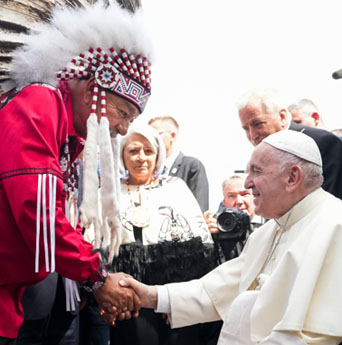
We can only hope that Pope Francis’s Canadian visit will equally advance the cause of Indigenous “Reconciliation” and (a word much used in this context) “healing” in the 21st century world’s second-largest mass of political geography. (The largest, by far, belongs to Vladimir Putin’s Russian Federation. And in this one geographic respect Canada is actually slightly larger than the usually friendly giant USA next door — although Canada currently has only 11.5% of the human population of the United States!)
It is without a shred of doubt quite impossible to say anything good about the Indian Residential Schools experience in Canada today (or, eg, the parallel assimilationist — and “Western or European cultural imperialist” — Indigenous educational institutions in the USA and elsewhere). And there is no question that “ground-penetrating radar” evidence in June of last year on what Paul Elie in The New Yorker has called “the remains of two hundred and fifteen children from the Church-run Kamloops Indian Residential School, in British Columbia” has “brought fresh urgency to the request” for a papal apology.
(And this concept of a papal apology, as Mr. Elie has suggested, had still deeper roots in “the findings, released in 2015, of a Truth and Reconciliation Commission that the Canadian government had launched to investigate the role of the Church, among other governing entities, in the historical mistreatment of that nation’s Indigenous peoples.” And this Commission in turn had grown out of the “largest class action settlement in Canadian history to date” of 2006–2007, known as the Indian Residential Schools Settlement Agreement (IRSSA), and then the “full apology on behalf of Canadians for the Indian Residential Schools system” delivered by Prime Minister Stephen Harper on June 11, 2008.)
Need for broader historical perspective
At the same time, to us there are also some things missing from the current debate that ultimately weaken the cause of Indigenous Reconciliation — and Recognition for the still largely unsung Indigenous role in what the arguably so far greatest Canadian historian has called “the growth of Canadian institutions.” And one of these things is some broader historical perspective on the real and quite impressive role of Indigenous peoples in the long-term growth of Canada (which is exactly what the misguided 19th century inventors of the residential schools lacked as well).
The Catholic Church was involved in “Canada [the Indigenous word] or New France” in a big way from the serious beginnings in the early 17th century. And Catholic priests almost certainly played a destructive role in the mid 17th century defeat of the Wendat confederacy between what are now called Lake Simcoe and Georgian Bay in Ontario, at the hands of the early “New York imperialist” Five Nations Iroquois.
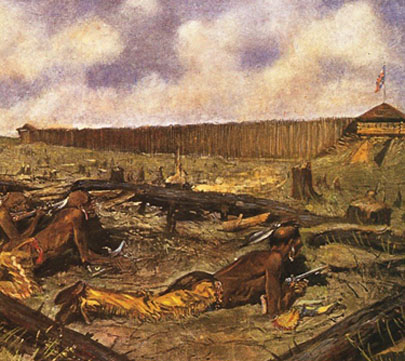
(One faction of the fleeing Wendat followed the fleeing French priests and allied workers to the Quebec city region, where their descendants still live in the early 21st century. And in the late 17th and early 18th centuries the New York Iroquois were expelled from the north shore of Lake Ontario by the Mississauga from the further We the North!)
The “Residential School Timeline” posted online by the National Centre for Truth and Reconciliation at the University of Manitoba, however, starts as recently as 1831 — with “Mohawk Indian Residential School opens in Brantford, Ontario.” And even here the main starting point is 1883 — with “Sir John A. Macdonald authorizes the creation of residential schools in the Canadian West. Sir Hector Langevin, Secretary of State for the Provinces tells Parliament: ‘In order to educate the children properly we must separate them from their families. Some people may say this is hard, but if we want to civilize them we must do that.’”
Indigenous peoples “fundamental to the growth of Canadian institutions”
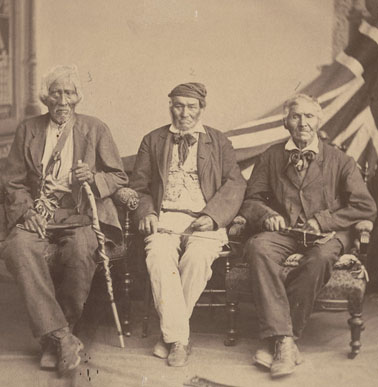
It is no doubt crucial to recognize publicly nowadays that this old 19th century Western imperial concept of civilization is appalling and quite wrong, on several grounds. But modern Canada (again an Indigenous word) begins long before the 19th century.
Note, eg, the still impressive first volume of the Historical Atlas of Canada, edited by R. Cole Harris of the University of British Columbia, and first published as long ago as 1987. Mr. Harris observes in his preface that the volume (subtitled From the Beginning to 1800)“has tended to confirm Harold Innis’s general insights … As Innis maintained, the pattern of Canada has been taking shape for almost 500 years and by New World standards is old.”
And then from another more recent source : “In its still ringing and provocative conclusion, Harold Innis’s now more than 90-year-old local classic, The Fur Trade in Canada: An Introduction to Canadian Economic History, complains: ‘We have not yet realized that the Indian and his culture were fundamental to the growth of Canadian institutions.’ (And 2020s apologies for this customary anglophone lexicon of the 1930s!)”
We Non-Indigenous Canadians have still in many ways not yet realized just what this now more than 90-year-old conclusion to a still-in-print book continues to mean for the Canadian future.
And we won’t realize this also crucial aspect of real-world Indigenous Reconciliation if we never talk about it, Non-Indigenous and Indigenous alike.
